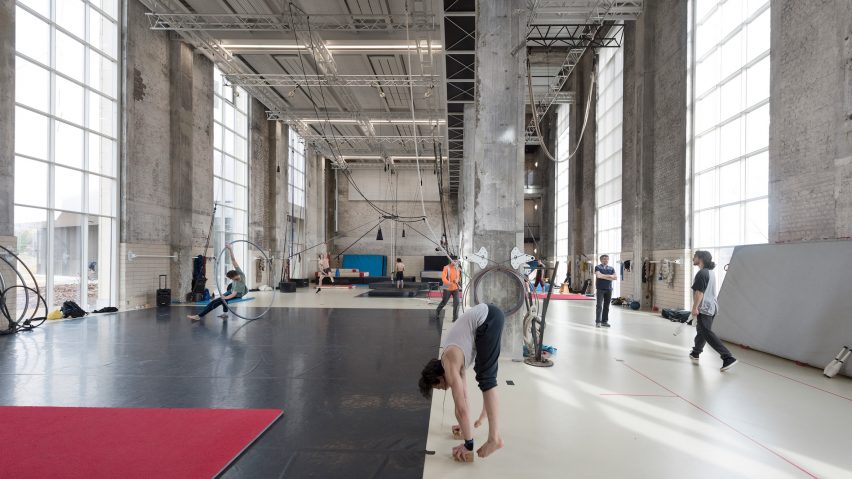
ESAC circus school built by Daniel Delgoffe inside an old Belgian boiler house
Architect Daniel Delgoffe has renovated and extended old brick boiler house to create a new home for ESAC, a leading Belgian circus school.
ESAC, the Ecole Supérieure des Arts du Cirque, is the only school in the country that offers an official degree programme in circus skills. It is based at the CERIA education campus run by the French Community Commission in Anderlecht, Belgium.
The school is partially housed inside a former boiler house overlooking a river that passes the campus. The rest of the facilities are contained within a new, concrete building that features green planting and photovoltaic panels on its roof.

"The existing building is of good quality and is a true landmark both on site and from the canal and the ring road," expalined Daniel Delgoffe, who is founder of architecture studio AAdd.
"The new construction is treated like a straightforward, pure volume that ties in perfectly with the campus renovation from a deliberately contemporary perspective," he told Dezeen.
"The spaces framed by these two buildings – the old and the new structure – have been designed on a more human scale and serve as a welcome and reception area."
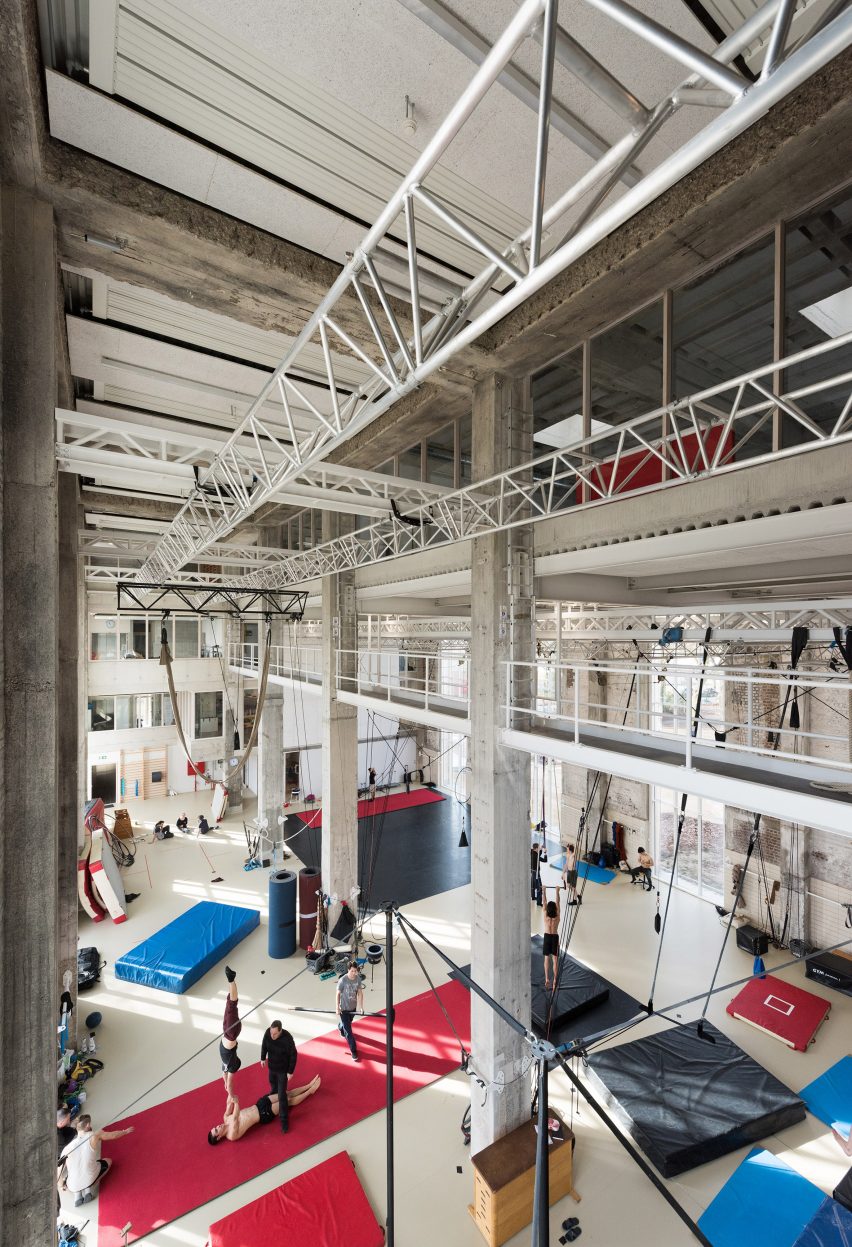
The main objective of Delgoffe's design was to create a series of flexible, visually connected spaces that respect the history of the circus and traditional skills while also accommodating more artistic modern practices.
Together, the two structures contain lecture rooms, a theatre, offices and dedicated training halls for dance, drama, acrobatics and trampolining, and shared spaces that can accommodate on-the-fly uses.
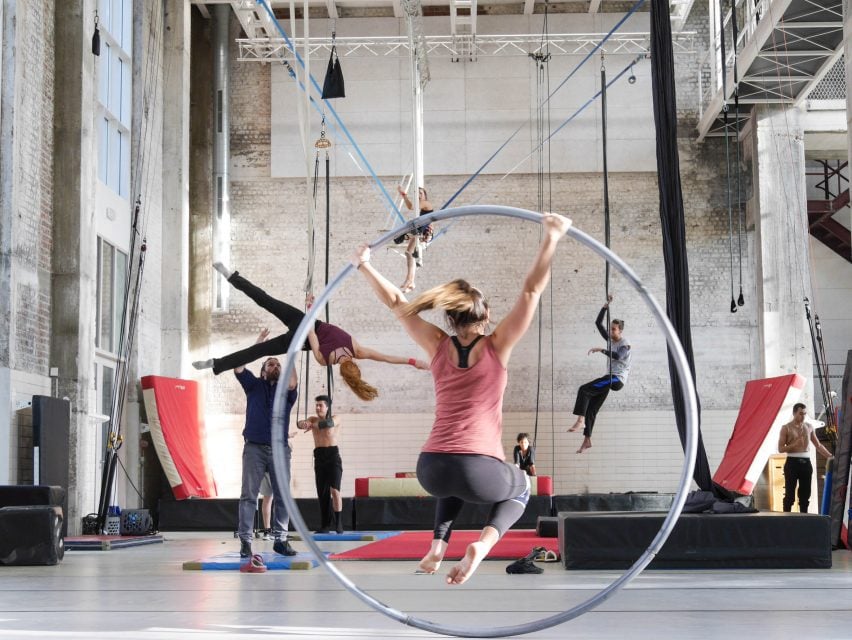
In the old building, Delgoffe preserved the existing concrete structure and the tall, narrow windows that puncture both the river-facing and campus-facing facades.
Interior partitions were removed and replaced interior partitions to create a new layout, with debris from the demolition work used to create new, load-bearing systems.
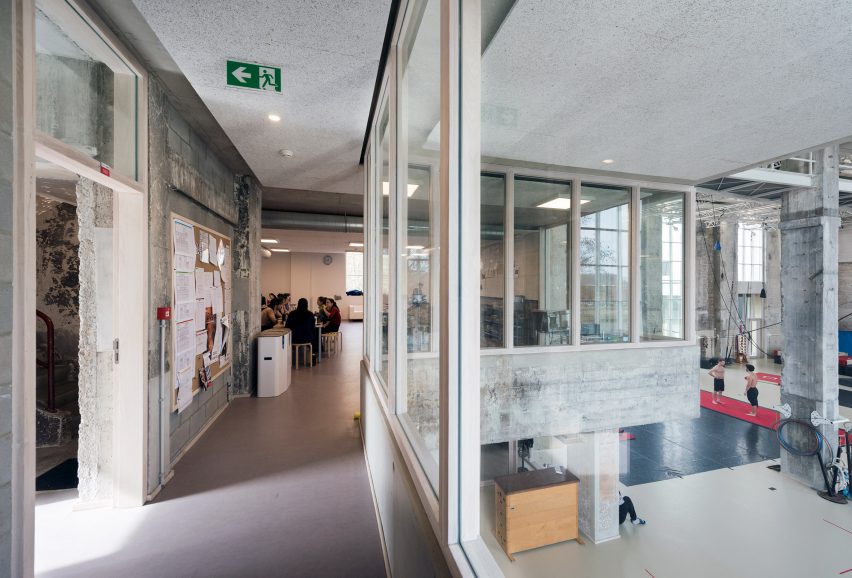
Reinforced floors are designed to be able to cope with the specific structural pressures of circus equipment such as trapezes.
"The load reserve liberated by the demolition work has been used to integrate new ones without having to adapt the foundations," the architect said.
"A combination of steel and concrete has been used to minimise the clutter of new elements, benefitting the space and maximising the potential for circus practices."
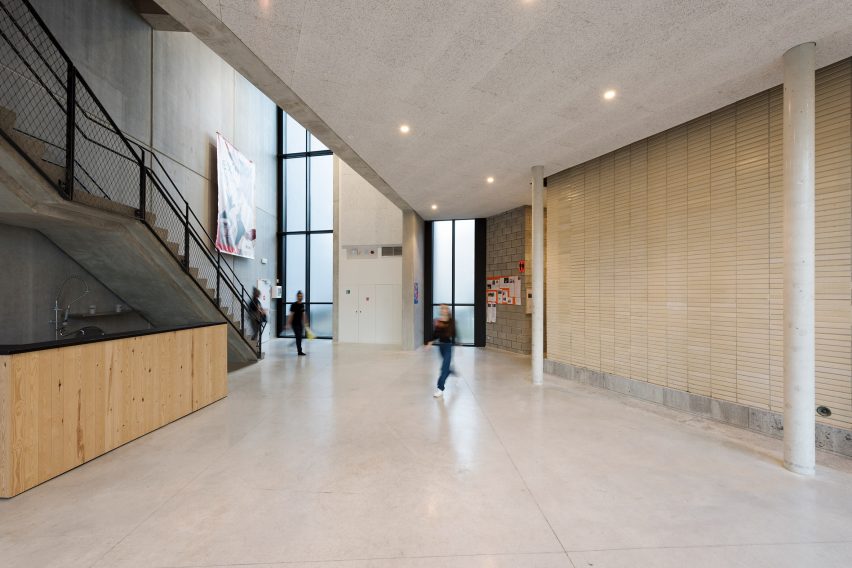
The existing huge, vertical windows provide light for the largest training space, which occupies a void at the heart of the building, rising from triple to almost quadruple-height from front to back. A system of steel beams and frames criss-crosses the space to allow the users to easily reconfigure the space with different pieces of equipment.
Classrooms and a student relaxation area occupy a space to the south of the space, while another large room designed for training, rehearsals and creative experimentation sits above it.
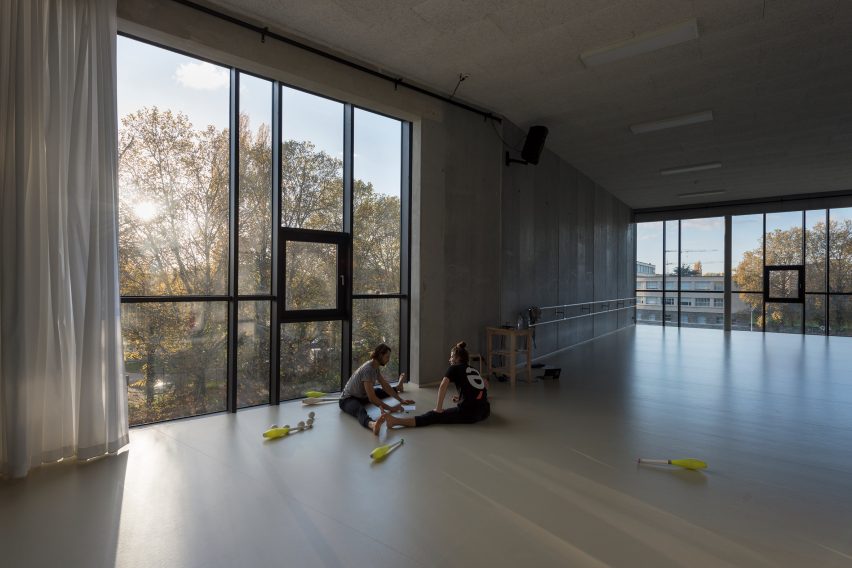
"We thus obtain a great compactness which releases the big void while offering visual links between all the functions," Delgoffe explained. "Each activity has a dedicated space, yet all users can still see one another and feel part of a larger community."
"The creative room is treated largely like a black box, while having glazing at the bottom so that students can see the campus and be seen when they are on the ground," he added.
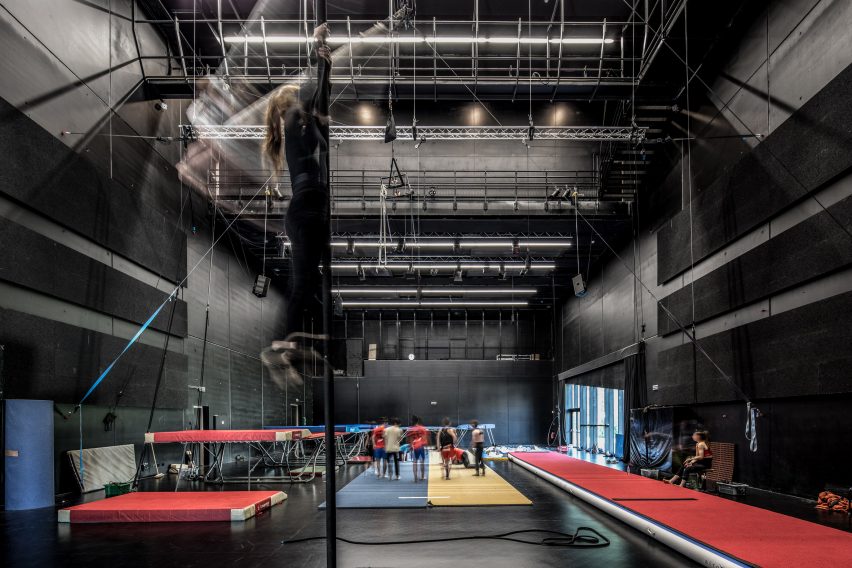
Toilets and changing rooms are accessible from both buildings, while administration rooms and teacher’s offices occupy the top two levels of the boiler house, with costume-making and storage housed of the fourth level and relaxation areas on the fifth.
The new building contains the 250-seat theatre as well as further training spaces. It is partially clad in aluminium panels, while the upper part of the building is covered in plaster, with large windows that correspond to the different internal uses, providing views out towards the rest of the campus.
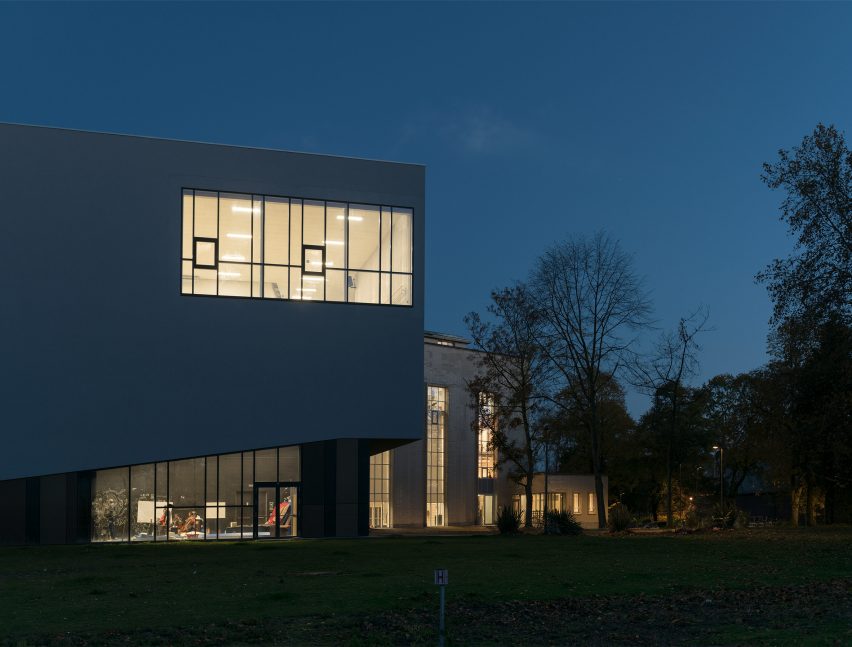
ESAC was one of 21 Belgian buildings to be longlisted for this year's Mies van der Rohe prize for European architecture, making it a bumper year for the small country. Others on the list included Bovenbouw’s conversion of three historic Antwerp buildings into apartments, the CAMP's pickle factory by Dhooge & Meganck and a new Folklore Museum in Mouscron by V+ and Projectiles.
Photography is by Marie-Françoise Plissart unless stated otherwise.